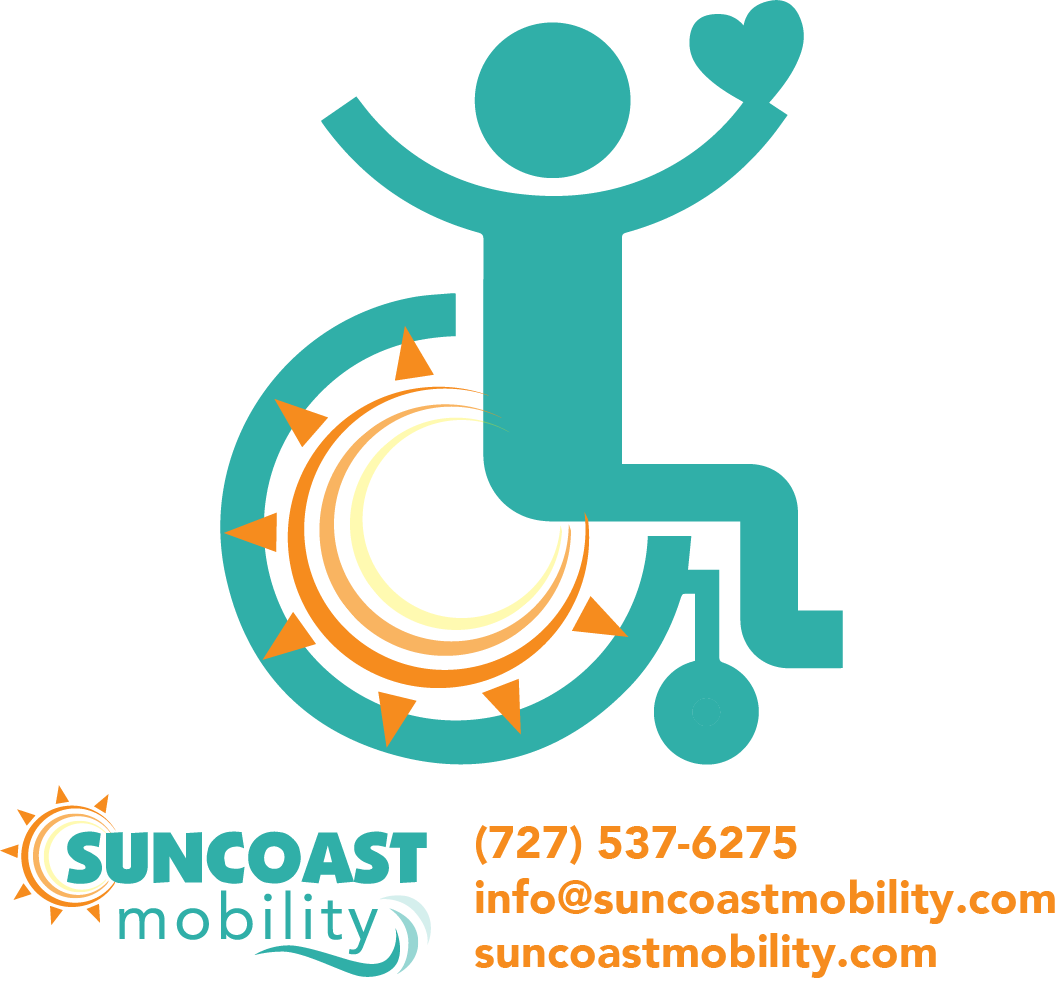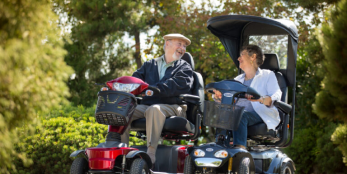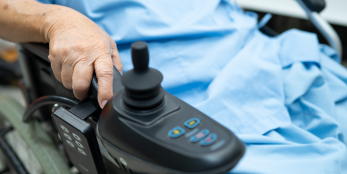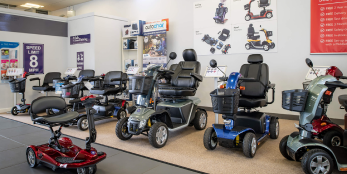Table of contents
Features to Look for When Purchasing a Mobility Scooter
Mobility scooters can be life-changing for individuals with limited mobility, offering greater independence and freedom in their daily lives. Whether you're using one for quick trips around the neighborhood, shopping at the mall, or exploring parks and events, the right scooter can provide comfort, safety, and ease of use. However, not all mobility scooters are built the same. Depending on how and where you plan to use it, there are various features to consider—ranging from comfort and safety to portability and overall usability.
This comprehensive guide will walk you through the most important aspects to consider before making a purchase, helping ensure your new mobility scooter fits your unique needs and lifestyle.
Comfort Features: Prioritizing Long-Term Use
Comfort is a top concern when purchasing a mobility scooter, especially if you plan to use it for extended periods or on a daily basis. A poorly fitted scooter can lead to aches, fatigue, and frustration, while the right features can make your journey smooth and enjoyable.
1. Adjustable Armrests
Many scooters come with armrests that can be flipped up or adjusted in height and width. This adjustability makes it easier for users to transfer in and out of the scooter, while also offering personalized support for different body sizes. Wider arm spacing is great for larger users, while swing-away armrests provide added convenience in tight spaces.
2. Tiller Adjustment (Steering Column)
The tiller is the part of the scooter that controls direction, usually by means of handlebars. An adjustable tiller allows the user to move it closer or farther away, accommodating users with shorter or longer arms. Infinite-adjustment tillers—such as those on the Buzzaround CarryOn—offer the most flexibility, which is particularly helpful for people with limited upper body strength or flexibility.
3. Seat Quality and Size
Scooter seats come in various styles, from basic vinyl seats to plush captain’s chairs with headrests and lumbar support. The width of the seat can also vary significantly, typically ranging from 17 to 22 inches. A larger, well-cushioned seat can make a significant difference for those using the scooter daily or for long rides. Captain’s seats, often found in heavy-duty or recreational models, offer greater comfort and support, particularly for users with back issues.
4. Suspension Systems
Good suspension is a game-changer for outdoor travel. Scooters with front and/or rear suspension systems can absorb shocks from uneven terrain, reducing the impact on your body and creating a smoother ride. This is especially important if you’ll be using your scooter on sidewalks, gravel paths, or uneven ground.
Safety Features: Peace of Mind on Every Ride
Mobility scooters are designed with safety in mind, but some offer advanced features that go above and beyond. Depending on your environment—busy urban sidewalks, shopping centers, or quiet residential areas—certain safety features may be more essential than others.
1. Horn and Alert Sounds
Almost all scooters include a horn or alert sound to notify pedestrians and passersby of your presence. While this may seem minor, it’s incredibly useful in crowded areas or when navigating through stores.
2. Headlights and Signal Lights
If you anticipate riding in early morning or evening hours—or simply in low-light areas—opt for a scooter with LED headlights, taillights, and turn signals. These lights not only illuminate your path but also make you more visible to others.
3. Reflective Surfaces and Flags
Visibility flags, often attached to the rear of the scooter, are brightly colored and extend above head height. They make you easier to spot from a distance or behind obstacles. Reflective decals can also enhance visibility, especially in dim conditions.
4. Seat Belts
Seat belts are commonly found on heavy-duty or fast recreational scooters. While not always necessary for slow indoor use, they are beneficial when riding over uneven terrain or at higher speeds. If you find you require a seat belt for stability, it may also be worth consulting a mobility specialist to ensure a scooter is the best mobility solution for your needs.
5. Rearview Mirrors
Mirrors provide a better field of vision, especially when reversing or changing direction in a crowd. They’re particularly useful for outdoor scooters that operate near foot traffic or in bike lanes.
6. Anti-Tip Wheels
These small wheels, located at the rear of the scooter, help prevent tipping—especially on hills or uneven terrain. For users navigating slopes, ramps, or curbs, anti-tip protection is essential for stability and safety.
Portability: Designed for Life on the Move
For many users, portability is just as important as performance. If you travel frequently or plan to take your scooter with you in a vehicle, airplane, or cruise ship, then portability features will be a key consideration.
1. Disassembly Options
Some scooters are designed to come apart into multiple lightweight pieces. These are known as travel scooters. When disassembled, the heaviest piece is usually the base, which can weigh anywhere from 25 to 55 lbs. Knowing the weight of this heaviest part is crucial to ensure you or your caregiver can lift it into a car trunk or storage compartment.
2. Folding Scooters
Folding scooters offer even more convenience. Manual folding models, like the EV Rider Transport 4M, can be folded flat and stored easily. Automatic folding scooters, such as the EV Rider Transport AF+, fold with the touch of a button and weigh as little as 49 lbs.—ideal for users with limited strength or dexterity.
3. Overall Product Dimensions
Make sure the folded or disassembled scooter will fit in your car, closet, or designated storage area. Some compact models are built to fit in airplane overhead bins, while others may need additional travel arrangements.
4. Battery Type and Airline Approval
Many airlines restrict the type of batteries allowed onboard. Lithium-ion batteries are generally safe for travel, but always confirm with your airline in advance. Most travel scooters come with FAA-approved battery options.
Usability: Performance That Matches Your Lifestyle
The usability of a scooter encompasses its everyday performance and ease of operation. Depending on whether you’ll be using it indoors, outdoors, or both, certain features may enhance your overall experience.
1. Speed Settings
Scooters generally offer multiple speed settings, allowing you to adapt to different environments. Indoor models usually top out at 3–5 mph, while outdoor or recreational scooters can reach speeds of 8–15 mph. Having the ability to adjust speed is particularly helpful in shared spaces or unpredictable terrain.
2. Battery Range and Charging
Battery life varies significantly. Entry-level travel scooters may offer 8–12 miles on a single charge, while high-end models can deliver up to 43 miles. Keep in mind that heavier users, hilly terrain, and frequent stops can all drain battery life more quickly. Charging typically takes 6–8 hours, and most scooters include a visual battery indicator to help monitor power levels.
3. Turning Radius
Turning radius is especially important for indoor use. A tighter turning radius—around 30–35 inches—allows the scooter to maneuver around furniture, corners, and doorways more easily. Larger scooters may have turning radii exceeding 50 inches, which could make them less practical for indoor navigation but more stable outdoors.
4. Weight Capacity
Each scooter is built to accommodate a certain maximum weight, usually ranging from 250 to 500 lbs. Choosing a scooter that can safely support your weight ensures reliable performance and prevents damage to the motor or frame. Heavy-duty scooters with higher weight capacities also tend to have larger seats and more powerful motors.
5. Controls and Display
User-friendly controls can make a huge difference, especially for individuals with limited hand mobility or vision. Look for backlit or digital displays, ergonomic throttle controls, and easy-access buttons. Some scooters even offer USB charging ports and Bluetooth connectivity.
Additional Features Worth Considering
As technology advances, mobility scooters continue to evolve. Here are some bonus features you might want to consider:
Swivel Seats: Makes it easier to get in and out of the scooter.
Cup Holders & Storage Baskets: Useful for carrying shopping bags, water bottles, or personal items.
Weather Protection: Some scooters include optional canopies or rain covers.
Smart Features: Newer models are beginning to integrate GPS, Bluetooth, and app connectivity for real-time tracking and diagnostics.
What features do I look for when purchasing a mobility scooter?
When choosing a mobility scooter, focus on key factors like comfort, battery range, maneuverability, and ease of transport. Think about the type of terrain you'll be navigating and whether you need a model that's easy to load into a vehicle. Features such as adjustable seating, handlebars, armrests, and built-in storage can also greatly enhance your experience.
Is a 3 or 4 wheel mobility scooter better?
A 4-wheel scooter provides noticeably greater stability than a 3-wheel model, making it ideal for users who prioritize balance. It performs well on uneven surfaces and delivers improved comfort during longer trips.
What are the disadvantages of mobility scooters?
Mobility scooters may have a shorter battery life, can be bulky and difficult to move or store, and often struggle with rough or uneven surfaces.
What is the lifespan of a mobility scooter?
A properly maintained mobility scooter generally lasts between 5 and 10 years. Its lifespan depends on factors such as build quality, how frequently it's used, and how well it's cared for.
Conclusion: Choosing the Right Scooter for You
Purchasing a mobility scooter is a significant investment in your independence and quality of life. With so many models and features available, it’s important to evaluate your specific needs and match them to the right design.
Start by identifying where you plan to use the scooter most—indoors, outdoors, or while traveling. Then, consider your comfort needs, safety requirements, and desired range and speed. Be honest about how much weight you need the scooter to support and whether you or someone else can lift it for transport. Portability, battery life, terrain capability, and ease of assembly should all factor into your decision.
You should also think about how often you’ll use the scooter and for what types of activities. Will it be for daily errands, recreational outings, or occasional use during longer trips? Features like adjustable seats, suspension systems, storage compartments, and lighting can make a huge difference in usability and convenience.
Don’t hesitate to test different models or speak with a medical professional, occupational therapist, or mobility specialist before deciding. The right scooter should not only meet your physical needs but should also support your lifestyle, enhance your freedom, and give you confidence in every ride.
With careful research and thoughtful planning, you can find a mobility scooter that empowers you to go where you want, when you want—with comfort, security, and style.








